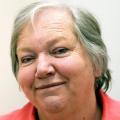Search your attics, cupboards and gardens - you may own a valuable Roman artefact.
Lindsay Allason-Jones, a former chairman of the Maryport Senhouse Museum Trust, archaeologist, author, museum professional and specialist in Roman material culture and Hadrian's Wall.
She is also writing the 11th volume of the British section of international Corpus Signorum Imperii Romani - and that is where the people of West Cumbria come in.
The Corpus Signorum Imperii Romani records the international collection of
sculptures and artefacts from the Roman world.
"The significant Senhouse collection will be an important part of that," she said.
It is known, however, that many of the altars which have garnered the interest of academics throughout the world, were also treated somewhat carelessly after being found.
Many were left sitting in the gardens of Netherhall, the Senhouse home, and many articles were given away or even taken away when the house lay empty for many years.
Lindsay said there are probably people around West Cumbria who have inherited pieces. Some may realise they are Roman and some may have no idea.
"We are not going to take anyone's treasures away from them but we would like to see and record them," she said.
And, in the ideal world, she will find two of the most important and elusive pieces.
One is a small statue that looks like a stick drawing of a man holding a banner.
The second is an altar with a Chi Rho symbol on the top. This would be a Roman altar adapted to Christianity by the addition of the Chi Rho, one of the earliest Christian symbols. It forms the shape of a P with an X through the centre.
Anyone finding anything they think might be of Roman origin should contact the Senhouse Roman Museum in Maryport.







Comments: Our rules
We want our comments to be a lively and valuable part of our community - a place where readers can debate and engage with the most important local issues. The ability to comment on our stories is a privilege, not a right, however, and that privilege may be withdrawn if it is abused or misused.
Please report any comments that break our rules.
Read the rules here